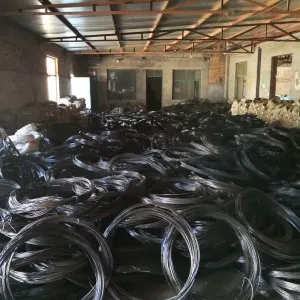The Unique Properties and Applications of Pure Iron Wire
Pure iron wire, a fundamental material in the world of metallurgy and manufacturing, possesses unique properties that make it crucial for various industries. Its characteristics contribute to an extensive array of applications, ranging from construction to electronics. Understanding the properties and uses of pure iron wire can illuminate why it remains a prominent choice for engineers and manufacturers alike.
Properties of Pure Iron Wire
Pure iron, often referred to as unalloyed iron, is known for its excellent ductility and malleability. These qualities allow it to be easily drawn into thin wires without breaking, making it an ideal candidate for wire production. The tensile strength of pure iron is another noteworthy feature; it is strong enough to withstand significant loads, which is essential in the construction and manufacturing sectors.
One of the most remarkable properties of pure iron wire is its magnetic permeability. Pure iron is highly magnetic and is used in applications requiring efficient magnetism, such as transformers and electric motors. This property is primarily due to its crystalline structure, which allows for easy alignment of the magnetic domains when subjected to an external magnetic field.
Furthermore, pure iron exhibits good corrosion resistance when compared to other metals in specific environments, especially when it is in a relatively pure state. However, it is important to note that pure iron can oxidize when exposed to moisture and air over time, leading to rust formation. Coatings and treatments are often applied to enhance its durability and prevent corrosion.
Applications of Pure Iron Wire
pure iron wire

The versatility of pure iron wire allows it to be used in a variety of applications. One prominent use is in construction, where it serves as reinforcement in concrete structures. When used as rebar, pure iron wire increases the tensile strength of the concrete, enabling it to withstand bending and stretching forces. This application is crucial in the construction of bridges, buildings, and highways.
In the realm of art and crafts, pure iron wire finds a significant place in sculpture and decorative works. Artists value its malleability, allowing for intricate designs and structures. Pure iron wire can be shaped and twisted into various forms, enabling creative expression while maintaining structural integrity.
In electrical applications, the magnetic properties of pure iron wire are exploited in the production of electromagnetic components. Iron cores in transformers and inductors utilize pure iron wire to enhance efficiency and performance. The wire's ability to conduct magnetic flux effectively makes it invaluable in the design of electrical devices.
Moreover, pure iron wire is used in the manufacturing of mechanical fasteners, springs, and other components that require a combination of strength and flexibility. The high tensile strength of pure iron allows for the creation of bolts and nuts that can withstand significant loads without deforming or breaking.
Conclusion
In conclusion, pure iron wire is a remarkable material characterized by its unique properties, including ductility, tensile strength, and magnetic permeability. Its versatility leads to widespread applications across various industries, from construction to electrical engineering and artistic creation. While its susceptibility to corrosion is a consideration, advancements in treatment and coating technologies have mitigated this issue to ensure long-lasting performance. As technology advances and new applications are developed, pure iron wire will continue to play a vital role in modern manufacturing and innovation, underscoring its enduring importance in a wide array of fields.

















